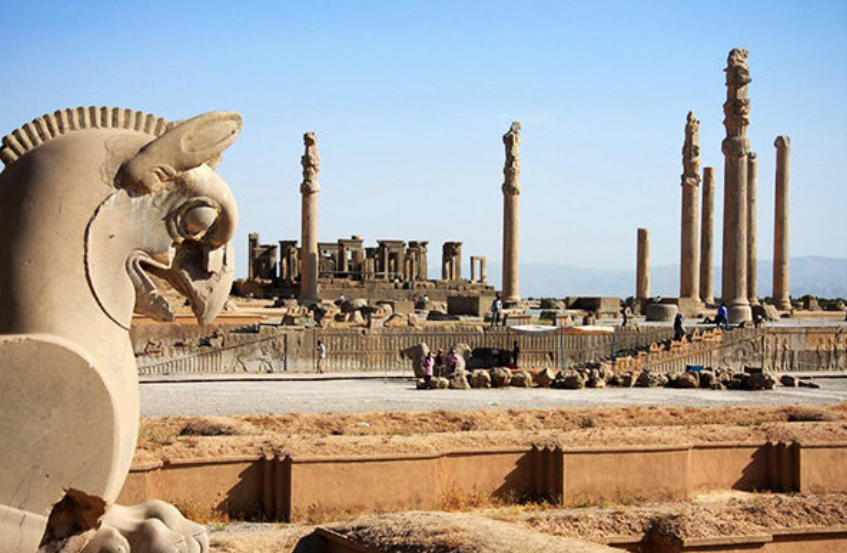December 31, 2021

seen lined up in front of some steps on the site of the capital city.
The second phase of a massive documentation project has started at Persepolis to collect, classify, restore and preserve stone fragments scattered across the ceremonial capital of the Achaemenid kings.
The hope is eventually to restore many of the pieces to their original place in the city’s architecture.
“These stone fragments, which are scattered in the open air, have been detached over time from gates, columns, and other stone monuments inside Persepolis,” the site director, Hamid Fadaei, said December 4. “Because the fragments are situated directly on the surface, coldness, rain and plant growth cause a lot of damage to them. Therefore, we decided to collect, document, and classify each piece of stone and then transfer them to covered cases inside Persepolis.”
The first phase of this project started in early 2019, and about 3,600 pieces of stones have been documented and transferred to the warehouse spaces so far, he said, adding that now it is possible to create a database to re-install the pieces to their original places.
The collecting includes a card recording the location where each piece was found, its weight, dimensions and a brief description to aid is trying to find where the piece came from.
The city’s immense terrace was begun about 518 BCE by Darius the Great. On this terrace, successive kings erected a series of architecturally stunning palatial buildings, among them the massive Apadana palace and the Throne Hall (“Hundred-Column Hall”).
The east side of the terrace abuts the Kuh-e Rahmat (“Mount of Mercy”). The other three sides are formed by a retaining wall. On the west side, a double stair in two flights of 111 short stone steps leads to the top. On the terrace are the ruins of several colossal buildings, all constructed of a dark gray stone (often polished to a marble-like surface) taken from the adjacent mountain.
According to the Encyclopedia Britannica, the stone was cut with the utmost precision into blocks of great size, which were laid without mortar; many of them are still in place. Especially striking are the huge columns, 13 of which still stand in the audience hall of Darius the Great (reigned 522–486 BC), known as the Apadana, the name given to a similar hall built by Darius at Susa. There are two more columns still standing in the entrance hall of the Gate of Xerxes, and a third has been re-assembled there from its broken pieces.
In 1933, two sets of gold and silver plates recording the boundaries of the Persian Empire in the three forms of cuneiform—ancient Persian, Elamite, and Babylonian—were discovered in the foundations of Darius’s audience hall. Several inscriptions, cut in stone, of Darius I, Xerxes I, and Artaxerxes III indicate to which monarch the various buildings were attributed.
Persepolis was the seat of the government of the Achaemenid Empire, though it was designed primarily to be a showplace and spectacular center for the receptions and festivals of the kings and their empire. It was burnt by Alexander the Great in 330 BCE, apparently as revenge against the Persians because King Xerxes had burned the Greek city of Athens around 150 years earlier.
